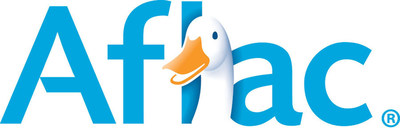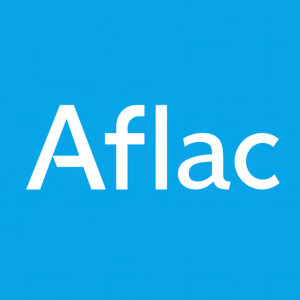American workforce burnout reaches tipping point
Rhea-AI Summary
Aflac's 14th annual WorkForces Report reveals increasing workplace stress and burnout affecting nearly 3 in 5 American workers, with millennials most affected at 66%. The study shows 38% of employees experiencing high stress levels in 2024, up from 33% in 2023, with Hispanic workers reporting higher rates at 46%. Financial vulnerability is widespread, with 51% unable to afford $1,000 in unexpected medical expenses. The report highlights that 93% of employees see an increasing need for supplemental insurance, while 62% would consider leaving their jobs for better benefits even with a pay cut. Notable findings include 50% of employees showing 'quiet quitting' behaviors and 70% experiencing anxiety about unexpected medical conditions.
Positive
- 93% of employees recognize supplemental insurance importance - highest in 14 years
- Benefits importance for employee retention reached all-time high
- 91% report positive impact from corporate social responsibility participation
Negative
- 38% of employees experiencing high stress levels, up from 33% in 2023
- 51% of employees cannot afford $1,000 in unexpected medical expenses
- 50% of employees showing counterproductive 'quiet quitting' behaviors
- 64% of employees cannot go more than one month without a paycheck
- Increased post-traumatic stress (12% vs 7%) and eating disorders (9% vs 6%) from 2023
Insights
This workforce study reveals critical insights for AFL investors. The rising demand for supplemental insurance, with
The report identifies significant opportunities in the Hispanic market segment, where stress levels and insurance needs are notably higher. This demographic shows stronger interest in supplemental coverage for family illnesses (
14th annual Aflac WorkForces Report uncovers very high levels of burnout are nearly twice as likely among
Workplace stress and burnout intensify
The Aflac WorkForces Report uncovers that burnout is affecting nearly 3 in 5 American workers — with a notable generational gap. Far more millennials, ages 28-43 (
Heavy workloads (
"In an ever-changing ecosystem, the results of the Aflac WorkForces Report reinforce the importance of employers doubling down on their understanding of what drives stress and potential signs of burnout among their employees. With a keen grasp of the pain points, employers can proactively develop programs and put measures in place to ensure employees feel supported both on and off the clock," said Jeri Hawthorne, senior vice president and Chief Human Resources Officer, Aflac Incorporated.
Counterproductive behavior poses new challenges for employers
According to the report, among all employees across all workplace models,
- Not doing everything required in job descriptions:
14% remote;15% hybrid;8% on-site. - Taking on secondary work without permission from employers:
22% remote;14% hybrid;11% on-site.
"Understanding performance dynamics of all workplace models is crucial for employers as they try to create work environments that will satisfy their employees and keep productivity at peak levels," said Hawthorne. "At the same time, employees may need to understand that decreases in productivity will signal to employers that their current model, whether on-site, remote or hybrid, is not working and they will likely consider changes."
Financial vulnerability fueled by anxiety, looming worry
American workers who have experienced some anxiety when thinking about the impact of an unexpected serious medical condition is on the rise:
The report also revealed that most employees do not understand the costs associated with a serious medical diagnosis such as cancer. More than three-quarters (
The youngest generation of workers, Gen Z, ages 18 to 27, continues to be the most financially vulnerable, with
Looking for a lifeline
With ongoing feelings of financial fragility — and stress and worry about the rising costs of health care — both employers and employees are eager for solutions, noting supplemental insurance as a viable step to help toward financial stability and added peace of mind. Benefits continue to be critical to employee retention, in part because employees consider benefits packages to be important to their physical, financial and mental well-being. In fact, in 2024, the importance of benefits to overall loyalty, workplace engagement and willingness to refer a friend to their organization reached an all-time high.
The study found a growing number of employees would consider leaving their jobs for better benefits, even if it meant taking a pay cut (
"When
In the survey,
A sense of purpose drives well-being
The study shows employees benefit significantly from participating in employers' corporate social responsibility (CSR) efforts, with
CSR efforts also can boost employee recruitment and retention, as
The 2024-2025 Aflac WorkForces Report highlights the vital role of comprehensive benefits in employees' well-being, satisfaction, resilience and retention. Additional survey findings, an infographic, trends and more can be found in the 2024-2025 Aflac WorkForces Report at Aflac.com/AWR.
ABOUT THE 2024-2025 AFLAC WORKFORCES REPORT
The 2024-2025 Aflac WorkForces Report, conducted by Kantar on behalf of Aflac, is the 14th annual study examining benefits trends, attitudes and use of employee benefits in the
ABOUT AFLAC INCORPORATED
Aflac Incorporated (NYSE: AFL), a Fortune 500 company, has helped provide financial protection and peace of mind for nearly seven decades to millions of policyholders and customers through its subsidiaries in the
Media contact: Jon Sullivan, 706.573.7610 or jsullivan@aflac.com
Analyst and investor contact: David A. Young, 706.596.3264 or dyoung@aflac.com
1 Aflac.com/AWR
2 National Cancer Institute's Financial Burden of Cancer Care/Cancer Trends Progress Report
3 LIMRA 2023 US Supplemental Health Insurance Total Market Report.
![]() View original content to download multimedia:https://www.prnewswire.com/news-releases/american-workforce-burnout-reaches-tipping-point-302301810.html
View original content to download multimedia:https://www.prnewswire.com/news-releases/american-workforce-burnout-reaches-tipping-point-302301810.html
SOURCE Aflac









